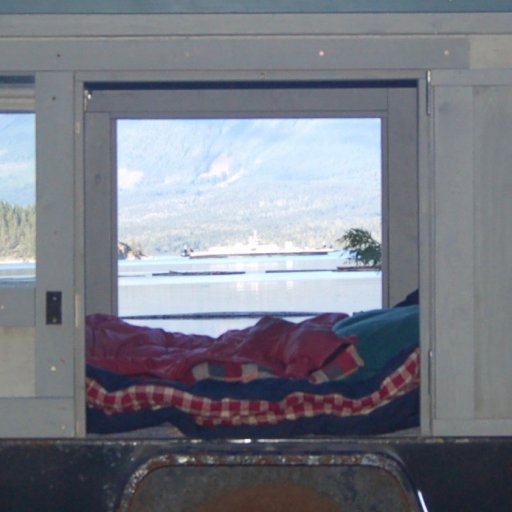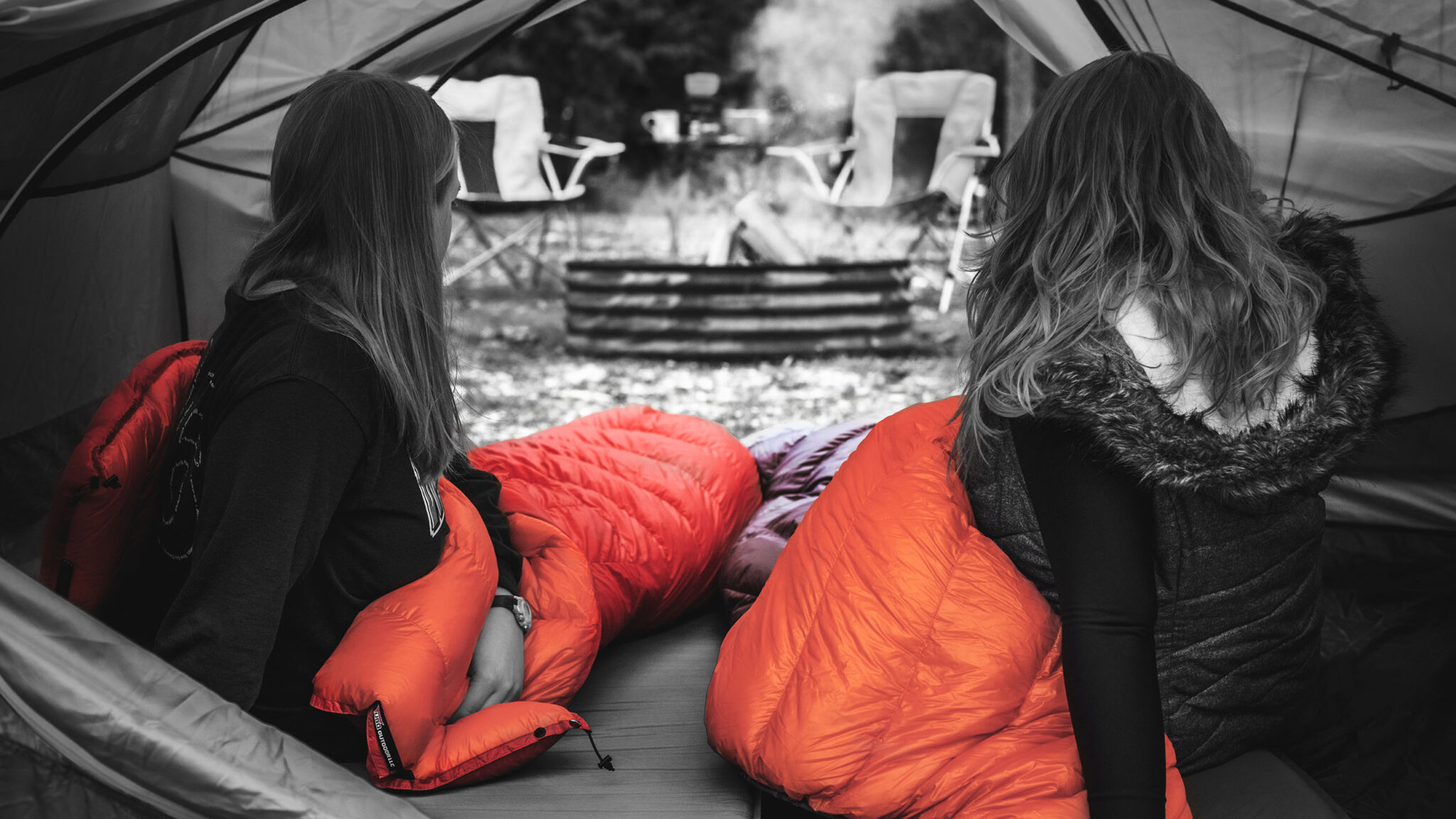We finally have some longer trips planned for this summer and it’s time to buy a couple of new sleeping bags. I would like to hear some recommendations of what people like and don’t like currently. The bags we’ve been using for years are Kelty and my first instinct is to go with another couple of those because we have liked them a lot. But I figured it would be worth asking in case I’ve missed something new.
Sleeping bags
- Thread starter J.W.
- Start date
-
Guest, UPDATE We went through the site migration runbook and completed all steps. We will need to complete the migration next week, but will leave the forums up for the weekend. A few days after maintenance, a major upgrade revision to the forum site will occur.

Influencer II
It all depends on what you are sleeping in! We sleep in a ground tent and love the Big Agnes sleep system! Very comfy.We finally have some longer trips planned for this summer and it’s time to buy a couple of new sleeping bags. I would like to hear some recommendations of what people like and don’t like currently. The bags we’ve been using for years are Kelty and my first instinct is to go with another couple of those because we have liked them a lot. But I figured it would be worth asking in case I’ve missed something new.
Good point! We use a ground tent. I've read about the Big Agnes but never seen them in person. Will see if I can find some to look at locally. ThanksIt all depends on what you are sleeping in! We sleep in a ground tent and love the Big Agnes sleep system! Very comfy.

Steward I
I’ve had a couple of Big Agnes bags since about 2002, and they are still great. The original sleeping pad I had developed a leak in 2019, and when I sent it back to Big Agnes to be repaired, they sent a new one at no charge to me. I didn’t expect that! Their customer service is top notch, as are their products! I very highly recommend Big Agnes!
Sleeping bag choice is all about application, weather, season, on the ground, in a trailer, RTT, no one choice will fit all.
I now travel in a Square Drop, the bed is always made, I use 3 bags, 2 heavy winter cotten and flannel expedition bags and a topper 3 season nylon thing.
Winter I'll sleep under 2 and cook. Today, mid may, just the topper.
If damp, wet is a thing go synthetic. If you are dry, unlimited budget, go goose down in extreme cold, if you only go out in the summer... price is all that counts.

I now travel in a Square Drop, the bed is always made, I use 3 bags, 2 heavy winter cotten and flannel expedition bags and a topper 3 season nylon thing.
Winter I'll sleep under 2 and cook. Today, mid may, just the topper.
If damp, wet is a thing go synthetic. If you are dry, unlimited budget, go goose down in extreme cold, if you only go out in the summer... price is all that counts.

Last edited:

Protector III
- 14,131
- First Name
- Bjoern
- Last Name
- Eldracher
- Member #
-
20111
- Ham/GMRS Callsign
- DO3BE
Choosing the right sleeping bag is a complex issue and requires advice. I would proceed as follows:
The first thing I would think about is how warm the sleeping bag needs to be for what I plan to do, i.e. what temperatures do I expect while on the road.
So I can make a first decision whether I need a summer or winter sleeping bag, or maybe one for 3 seasons or even an extreme expedition sleeping bag.
Many manufacturers specify several temperature values (determined in the laboratory) for this purpose. For example, we often see there a comfort value, a kind of limit value and an extreme value. I would take a very close look at which values are specified under which conditions.
Then I would think about the material. Down or synthetic fiber has already been mentioned here. Down can keep very warm and has a comparatively small pack size. It also absorbs moisture and releases it again (good sleeping climate) , but if it gets wet, it may fail its good characteristics and the filling may clump. Then synthetic fiber is in demand, combined with a comparatively large pack size. By the way, there is also water-repellent coated down. With down I would look exactly where they come from and how they are obtained, keyword: animal welfare. Synthetic fiber sleeping bags are easy to care for and durable. They have advantages in moisture and the filling is sometimes even silicone coated, making it even more resistant to moisture absorption. They are often also cheaper than sleeping bags with down feather filling.
Next thing I would look at is the shape of a sleeping bag. We see blanket sleeping bags, mummy sleeping bags and a combination of both (look like an egg shape). Mummy sleeping bags have less empty space than the blanket sleeping bags, so they keep you warm better. But there is a little less freedom of movement. However, the head, arms, feet, ... should not be too close to the sleeping bag, as this can create cold bridges. The egg-shape combines both somehow. I would try what suits you better. Exactly the same applies to the right length: try it out, every body is different.
Yes and then there are many details: how are the cords to pull the hood, are there inside pockets, is there an insulating collar on the hood, is the zipper on the right or left and and and. In my opinion, the only thing that really helps is to look at it and try it out, because this is really very individual. And of course many special forms, like sleeping bags that can be linked together, that can be used as a blanket, pure bivy bags etc.
This is a short summary from my experience and how I would do it. Especially if you are really dependent on a good sleeping bag, I would always get good advice before buying.
Ah, and if you were satisfied with your previous sleeping bag, why not take the same model again? I did the same, I had 10 years a winter sleeping bag from Ajungilak (the classic "Tyin Winter") and have been very happy with it. A synthetic sleeping bag. At some point the thermal performance was then no longer as good as in the beginning. From my point of view, 10 years and really many uses is also a long time. I just bought the same model again.
By the way, there is also an Overland Bound Boot Camp article that deals with this topic, check it out here:
 www.overlandbound.com
www.overlandbound.com
Well, a good sleeping bag is important, because there is nothing like a good sleep on the road to enjoy the next day so right! In this sense enjoy overlanding!
The first thing I would think about is how warm the sleeping bag needs to be for what I plan to do, i.e. what temperatures do I expect while on the road.
So I can make a first decision whether I need a summer or winter sleeping bag, or maybe one for 3 seasons or even an extreme expedition sleeping bag.
Many manufacturers specify several temperature values (determined in the laboratory) for this purpose. For example, we often see there a comfort value, a kind of limit value and an extreme value. I would take a very close look at which values are specified under which conditions.
Then I would think about the material. Down or synthetic fiber has already been mentioned here. Down can keep very warm and has a comparatively small pack size. It also absorbs moisture and releases it again (good sleeping climate) , but if it gets wet, it may fail its good characteristics and the filling may clump. Then synthetic fiber is in demand, combined with a comparatively large pack size. By the way, there is also water-repellent coated down. With down I would look exactly where they come from and how they are obtained, keyword: animal welfare. Synthetic fiber sleeping bags are easy to care for and durable. They have advantages in moisture and the filling is sometimes even silicone coated, making it even more resistant to moisture absorption. They are often also cheaper than sleeping bags with down feather filling.
Next thing I would look at is the shape of a sleeping bag. We see blanket sleeping bags, mummy sleeping bags and a combination of both (look like an egg shape). Mummy sleeping bags have less empty space than the blanket sleeping bags, so they keep you warm better. But there is a little less freedom of movement. However, the head, arms, feet, ... should not be too close to the sleeping bag, as this can create cold bridges. The egg-shape combines both somehow. I would try what suits you better. Exactly the same applies to the right length: try it out, every body is different.
Yes and then there are many details: how are the cords to pull the hood, are there inside pockets, is there an insulating collar on the hood, is the zipper on the right or left and and and. In my opinion, the only thing that really helps is to look at it and try it out, because this is really very individual. And of course many special forms, like sleeping bags that can be linked together, that can be used as a blanket, pure bivy bags etc.
This is a short summary from my experience and how I would do it. Especially if you are really dependent on a good sleeping bag, I would always get good advice before buying.
Ah, and if you were satisfied with your previous sleeping bag, why not take the same model again? I did the same, I had 10 years a winter sleeping bag from Ajungilak (the classic "Tyin Winter") and have been very happy with it. A synthetic sleeping bag. At some point the thermal performance was then no longer as good as in the beginning. From my point of view, 10 years and really many uses is also a long time. I just bought the same model again.
By the way, there is also an Overland Bound Boot Camp article that deals with this topic, check it out here:
OB Approved - 10 Tips For Sleeping Warm In Camp
Sleeping Warm in Camp Hello All, I am new to Overland Bound but have been travelling in the mountains for 29 years and spent over 10 years as a backpacking, mountain and raft guide. Being new here I wanted to be able to give back and contribute something to the group right off the bat. I...
Well, a good sleeping bag is important, because there is nothing like a good sleep on the road to enjoy the next day so right! In this sense enjoy overlanding!
Last edited:
I know the specs I need. I’m more interested in hearing people’s personal experience with specific brands. But thanks for taking the time to write all that up!By the way, there is also an Overland Bound Boot Camp article that deals with this topic, check it out here:

Enthusiast III
I have a few tetons good value and quality for the price , but heavy and bulky . They are also comfy

Protector III
- 14,131
- First Name
- Bjoern
- Last Name
- Eldracher
- Member #
-
20111
- Ham/GMRS Callsign
- DO3BE
Thanks. Understand. So just to add: I go with Ajungilak Sleeping bags since about 20 years now. Always very happy wit them. The brand has a long history and vast experience with sleeping bags. Ajungilak as founded 1855 in Norway and I have read that famous explorers such as Amundsen relied on their sleeping bags.I know the specs I need. I’m more interested in hearing people’s personal experience with specific brands. But thanks for taking the time to write all that up!
OverLamb24
Rank V

Advocate III
Not to throw a wrench in your plans and research, but have you looked into sleeping quilts? These are very popular within the lightweight backpackers world. They are often made to very high standards with the best materials available in order maximize warmth,comfort, space savings. They are not for everyone but if it is for you it can provide an amazing upgrade over the traditional sleeping bag especially outside of deep cold weather camping. They also are flexible in use so they can fix many situations and used allowing one to vent if too warm or button up for extra warmth. They can have potential lead time for construction but it can be well worth it. I have experience with these brands and find them to be good value and quality with options at different price points. Hammock Camping Outfitters | Hammock Gear
 enlightenedequipment.com
enlightenedequipment.com

 ugqoutdoor.com
ugqoutdoor.com
If you want to get into even more premium brands check out these three brands which also offer some bag options.

 featheredfriends.com
featheredfriends.com

 www.westernmountaineering.com
www.westernmountaineering.com

 katabaticgear.com
katabaticgear.com
Ultralight Backpacking Gear & Outdoor Apparel | Enlightened Equipment
Top-quality ultralight sleeping gear and outdoor apparel made with a passion that goes where you go. Come check out our collection for your next adventure.

Home
We make back packing gear for kayaking, canoeing, bike touring, or any other outdoor adventure activity that requires light weight small pack size equipment. We manufacture high quality back packing quilts, tarps and accessories from our shop located in Jackson, Michigan.
 ugqoutdoor.com
ugqoutdoor.com
If you want to get into even more premium brands check out these three brands which also offer some bag options.

Feathered Friends - Down Sleeping Bags, Outerwear, & Down Bedding
Feathered Friends has been handcrafting the finest down sleeping bags, down garments, and down bedding in Seattle, Washington since 1972. Go backpacking with an ultralight down sleeping bag, stay warm with an expedition down jacket, or warm the home with a down comforter. 100% of the down we use...

Home - Western Mountaineering
Western Mountaineering Home Page - Explore our full line of premium down insulated products here.

Ultralight Outdoor Gear - Quilt Style Sleeping Bags - Katabatic Gear
We design the highest quality ultralight backpacking gear: UL quilt style sleeping bags, backpacks, bivys, and accessories for your next lightweight adventure.
I had not even heard of them. Looks interesting, thanks!have you looked into sleeping quilts?
OverLamb24
Rank V

Advocate III
You are very welcome. I love them since im a very active sleeper and use hammocks often. Another plus is you can drape them over another bag to increase the insulate value of both for deep winter use.I had not even heard of them. Looks interesting, thanks!have you looked into sleeping quilts?
Kerner
Rank IV

Enthusiast III
We got one of the Nemo spoon shaped bags for our oldest and it's quickly become the "if I'm going solo" bag I grab. That shape is great for sleeping on my side.
I'm not familiar with those. Will add it to the list of things to check out. ThanksWe got one of the Nemo spoon shaped bags for our oldest and it's quickly become the "if I'm going solo" bag I grab. That shape is great for sleeping on my side.
I also have a Nemo and love it. My is a Down rectangular bag. It has a pocket for my insulated Thermo-rest pad. Between the two I have slept great even in cold temps.I'm not familiar with those. Will add it to the list of things to check out. ThanksWe got one of the Nemo spoon shaped bags for our oldest and it's quickly become the "if I'm going solo" bag I grab. That shape is great for sleeping on my side.
I used both while doing Moto-camping adventures and off road travel.
You can’t go wrong with a Nemo, great quality bags.

Advocate I
I've been really happy with Teton bags - All Sleeping Bags | TETON Sports | tetonsports.com
My Kelty had the pocket for the sleeping pad too. Works pretty well but I don't always use it because every once in a while you wake up all discombobulated and half way off the pad from rolling over. That might just be me though ;)
rsweet
Rank V

Member III
- 2,298
- First Name
- Robert
- Last Name
- Sweet
- Member #
-
17264
- Ham/GMRS Callsign
- KN6IHR
My wife and I use this Marmot Mavericks Double-Wide Sleeping Bag | REI Co-op in our Alu-Cab Expedition RTT...actually too warm. Marmot makes great gear. Big Agnes is great too.
The Teton Bags are very comfortable, inexpensive but also very bulky.
For most camping (above 20 degrees), we've been using down quilts as well. Versatile, comfortable and compact.
Already linked above but we are using and recommend. Would probably recommend getting the heavier shell material (20D?) since weight is not a big concern for the non-backpacking use.
 enlightenedequipment.com
enlightenedequipment.com
For most camping (above 20 degrees), we've been using down quilts as well. Versatile, comfortable and compact.
Already linked above but we are using and recommend. Would probably recommend getting the heavier shell material (20D?) since weight is not a big concern for the non-backpacking use.
Ultralight Backpacking Gear & Outdoor Apparel | Enlightened Equipment
Top-quality ultralight sleeping gear and outdoor apparel made with a passion that goes where you go. Come check out our collection for your next adventure.

